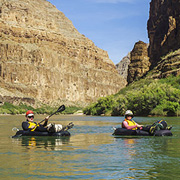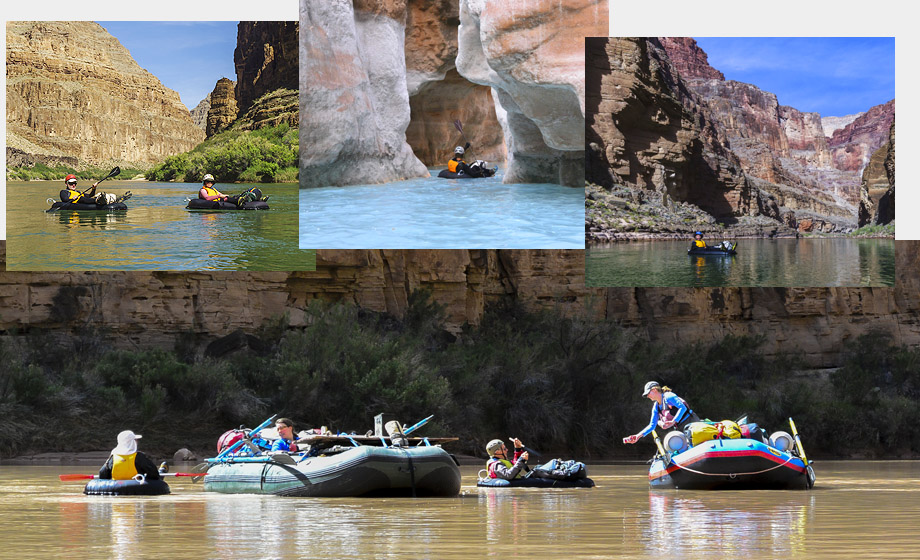 The packrafting rules in Grand Canyon National Park have been overhauled in response to a Coalition of American Canyoneers request early last year. The prior rule required “walking the river bank when possible” and that led to a lot of confusion about which routes were possible and/or acceptable. The new rules eliminate the “walk when you can” rule and extend the packraft distance to 8 miles on a backcountry permit (the previous rule was 5 miles).
The packrafting rules in Grand Canyon National Park have been overhauled in response to a Coalition of American Canyoneers request early last year. The prior rule required “walking the river bank when possible” and that led to a lot of confusion about which routes were possible and/or acceptable. The new rules eliminate the “walk when you can” rule and extend the packraft distance to 8 miles on a backcountry permit (the previous rule was 5 miles).
Grand Canyon National Park – Superintendent’s Compendium
River Assisted Backcountry Travel (RABT) is defined as the transient travel on the Colorado River using a portable, personal raft (typically packrafts) for the purpose of crossing the river to access a route or trail on the other side or to travel a limited distance to gain access to a route or trail. The primary purpose of the trip is land based, typically a backcountry hike or canyoneering trip, and the travel on the Colorado River is incidental. River Assisted Backcountry Travel is allowed under the following conditions:
• The group must have a backcountry permit with River Assisted Backcountry Travel designation regardless of duration of trip.
• A Type III or Type V PFD must be worn by each person while on the Colorado River.
• Multiple crossings/launches are approved if the permitted itinerary requires them.
• The distance travelled on the river is limited to 8 miles per backcountry permit or approved exceptions.
• Any packraft or device used must be carried in and out by the person.
• The river travel does NOT occur within the following restricted areas:
* Lees Ferry (River Mile 0) to the Navajo Bridge (RM 4.5)
* Boat Beach (RM 88) to Pipe Creek (RM 89.5).
Information on obtaining a Backcountry Permit:
https://www.nps.gov/grca/planyourvisit/backcountry-permit.htm

